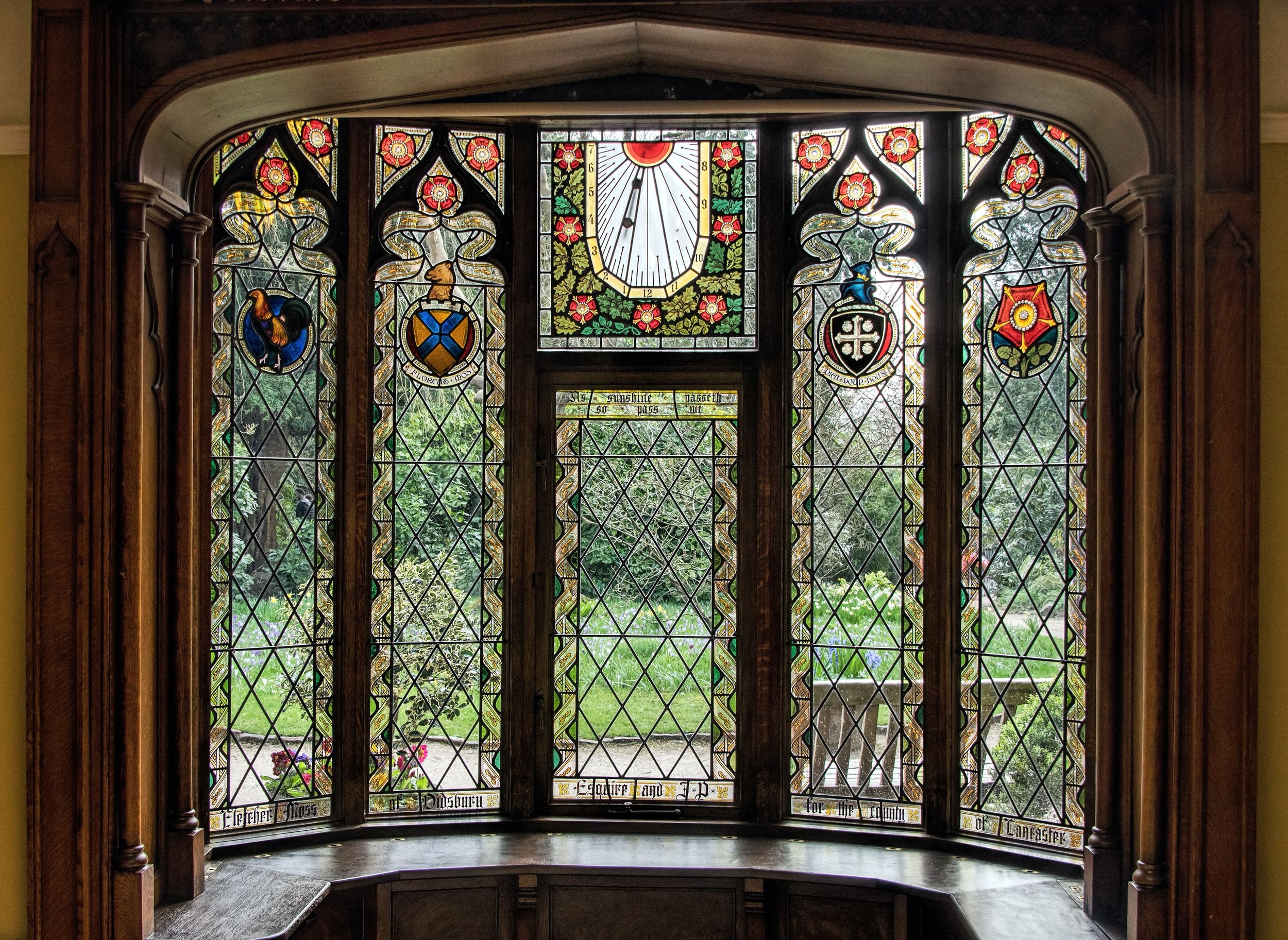Telling the time by the sundial
The restoration of this beautiful window provides an opportunity to learn about the role of sundials in society. Before standardised clocks, everywhere had a different ‘local’ time. There were mass dials on churches for ringing bells to bring people to church, and most grand houses had one to check their clocks. It wasn’t until railways needed timetables that clocks all read the same time across the country.
Telling the correct time with the sundial is simple, but it does require some adjustments to match the actual time on your watch or phone.
There are only a few times of the year when a sundial tells an accurate time. Sometimes the earth is near the sun, and orbiting quickly; sometimes it is further away and orbiting more slowly. This means that a sundial hour’s length can vary over the year. Or, to put it a different way, sundials tell solar time and clocks tell clock time.
Solar time is based on when the sun reaches its highest point, when it crosses the meridian, at noon. Next day, when it crosses the meridian again, it is noon again. However, the time that passes between successive ‘noons’ may be more or less than 24 hours, depending on the length of day.
Clock time is based on all days being exactly 24 hours long - a ‘mean’ day. Although this is not really true, it is more convenient for everyone to be on the same time. The differences between ‘sun’ days and ‘mean’ days build up to produce bigger differences between the ‘sun time’ and the ‘clock time’.
Each sundial has its own summary of these differences, which can be shown graphically in a diagram called ‘The Equation of Time’ (EOT). Below is the EOT for the Parsonage sundial.
Look at the time on the sundial
Locate today’s date (approximately - it doesn’t show every day) on the horizontal axis, then come down until you meet the curved line.
Look across to the left vertical axis, then add or subtract the number of minutes from the sundial time, depending on whether there is a + or - sign.
This time should approximately correspond to the actual time.


